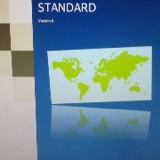Information
-
Document No.
-
Audit Title
-
Client / Site
-
Conducted on
-
Prepared by
-
Location
-
Personnel
8.1 - EXTERNAL STRUCTURE AND FABRIC (BASE)
-
The structure, fabric, location and layout of buildings must not pose a risk to the product (e.g. contamination.)
8.2 - INTERNAL STRUCTURE (BASE)
-
Walls, floors, ceilings, drains and doors must be designed and maintained to allow effective cleaning. They must be maintained in a good condition to prevent foreign object risks.
8.2.1 - INTERNAL STRUCTURE (MEDIUM)
-
Walls, floors, ceiling, drains and doors must be constructed of impervious materials.
-
Wall/floor junctions must allow easy cleaning and prevent build-up of debris.
-
Fabrication joints must be sealed and free from mould so as not to pose a foreign object risk.
-
Floors must be anti-slip.
8.2.2 - INTERNAL STRUCTURE (HIGH)
-
Wall/floor junctions must be coved.
-
There must be a floor to ceiling physical barrier between High areas and non-High areas.
-
Openings between High areas and non-High areas must be kept to a minimum.
-
Internal lifting doors must not be in contact with the ground.
-
Where openings exist they must be managed to minimise the risk.
8.3 - FLOOR GRADIENTS (BASE)
-
Pooling water which may lead to splashing and contamination must be managed to ensure it poses no risk to the product.
8.4 - DRAINS (BASE)
-
Drains must be accessible for cleaning.
8.4.1 - DRAINS (MEDIUM)
-
A drain plan must be available for the site.
8.4.2 - DRAINS (HIGH)
-
Drains must flow from High to Base areas.
-
A system must be in place to prevent backflow.
8.5 - WALKWAYS (MEDIUM)
-
Walkways and steps over production lines must be designed to prevent product contamination (e.g. steps are fitted with back plates and enclosed sides.)
8.6 - EXTERNAL DOORS (BASE)
-
All external doors must be effectively proofed against pests.
-
Where strip curtains are fitted they must be full length (but not in contact with the floor), intact, and kept clean.
8.6.1 - EXTERNAL DOORS (MEDIUM)
-
External doors (including lifting (roller shutter) doors) in open food handling areas must be intact and not used for general access.
-
External doors opened to provide ventilation must be suitably controlled e.g. a close fitting mesh screen is in place across the doorway.
8.6.2 - EXTERNAL DOORS (HIGH)
-
External lifting (roller shutter) doors must not be permitted.
8.6.3 - REMOVABLE WALL SECTIONS (HIGH)
-
Where used for the introduction/removal of large equipment, removable wall sections between the High and Base areas must be close fitting and sealed each time after opening.
-
A full deep clean of the High area environment must be undertaken if the removable wall section is removed.
8.6.4 - FIRE DOORS (HIGH)
-
Fire exits must be alarmed or tamper evident.
8.7 - LIGHTING (BASE)
-
Lighting in all areas must enable safe working and good visibility. Adequate lighting must be in place above product inspection areas.
8.8 - VENTILATION AND EXTRACTION (BASE)
-
Heating, ventilation and extraction systems must be effective at preventing condensation and excessive dust.
8.8.1 - VENTILATION AND EXTRACTION (MEDIUM)
-
A documented risk assessment must be conducted to determine the requirement for air filtration.
-
Where air filtration is in place, filters must be regularly inspected and replaced.
8.8.2 - VENTILATION AND EXTRACTION (HIGH)
-
A system must be in place to maintain positive air pressure from High to non-High areas where the products in the area meet all the following criteria: - product is uncovered or open, therefore exposed to potential contamination - product is ready to eat or ready to heat - product can support the growth of pathogenic bacteria, e.g. Salmonella, E.coli, Listeria, - product has undergone full cooking equivalent to 70°C for 2 minutes, prior to entering the High area
-
The total number of air changes must be risk assessed based on the size of the area, number of personnel and the equipment used.
8.9 - EVAPORATOR SOCKS (BASE)
-
Evaporator socks must be cleaned and maintained at a scheduled frequency.
-
The frequency must be adequate to prevent build-up of debris/mould growth.
8.9.1 - EVAPORATOR SOCKS (HIGH)
-
Evaporator socks for High areas must be identifiable and dedicated. High and Base area air socks must be washed separately.
8.10 - SERVICES (BASE)
-
All services must be designed from material suitable for the purpose and appropriate to the area where used, intact and allow easy and effective cleaning.
-
This must include if present, although this is not an exhaustive list: - pipework for water/gas/compressed air - electrical cabling/conduit/sockets - ventilation ducting, compressors/pumps, fire sprinkler systems
8.11 - STORAGE AREAS (BASE)
-
Storage areas must be fit for purpose and maintained in a clean and hygienic condition.
-
Materials must not be stored directly in contact with the floor or against the walls to allow inspection, prevent contamination, and prevent pest harbourage.
8.12 - TEMPERATURE CONTROLLED AREAS (BASE)
-
Construction and fabrication of walls, floors and ceilings must be suitable for the purposes of retaining temperature.
-
Where automatic doors are fitted, they must close in a safe but timely manner that minimises the loss of temperature control in the area.
-
Condensate from evaporators must flow to drain and not drip on product.
8.12.1 - TEMPERATURE CONTROLLED AREAS (MEDIUM)
-
Where appropriate, any risk of backflow through condensate drainage into the evaporator must be prevented.
8.12.2 - TEMPERATURE CONTROLLED AREAS (HIGH)
-
Where appropriate, a risk assessment must be carried out to determine if chemical sanitising rings are required in condensate drip trays.
8.13 - PRODUCTION OFFICES (BASE)
-
Production offices (including testing and first aid rooms) with direct access to production and storage areas must be managed so that they do not pose a risk to product.
-
The rules for stationery items (pens, rulers etc.) in these offices must be consistent with site requirements.
-
Eating and drinking is not permitted in these offices, with the exception of drinking-water, and product sampling.












